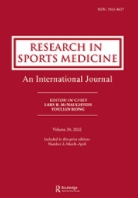Ferioli D1,2, La Torre A1, Tibiletti E3, Dotto A4 , Rampinini E2
1, Department of Biomedical Science for Health, Università degli Studi di Milano, Milano, Italy; 2, Human Performance Laboratory, Mapei Sport Research Centre, Olgiate Olona, VA, Italy; 3, Pallacanestro Reggiana s.r.l., Reggio Emilia, Italy; 4, Universo Treviso Basket s.r.l., Treviso, Italy

ABSTRACT
This study examined the association and predictive ability of internal load markers (based on rating of perceived exertion, RPE) with non-contact injuries in basketball. 35 basketball players (age: 24 ± 6 years, stature: 196 ± 9 cm, body mass: 91 ± 12 kg) were prospectively followed during 1 or 2 seasons, during which non-contact injuries were recorded. Markers examined were: mean weekly RPE, weekly load, exposure, week-to-week load change, acute:chronic 1:2, 1:3, 1:4 load ratio. A generalized estimating equations analysis was used to determine association with non-contact injury in the subsequent week. Prediction was examined with receiver operating characteristic curve, area under the curve (AUC) and Youden index. No associations were found between load markers and non-contact injuries (all p > 0.05); load markers showed no injury predictive ability (AUC range: 0.468-537; Youden index range: 0.019-132). In conclusion, the load markers selected are not associated with non-contact injuries and they cannot be used to predict injuries in basketball.
Res Sports Med. 2020 Aug
PMID: 32812787 DOI: 10.1080/15438627.2020.1808980